Best ECM Albums: 50 Must-Hear Classics From The Legendary Jazz Label
The best ECM albums reveal why the label’s unique style and sound has made it one of the most forward-thinking jazz record labels of all time.
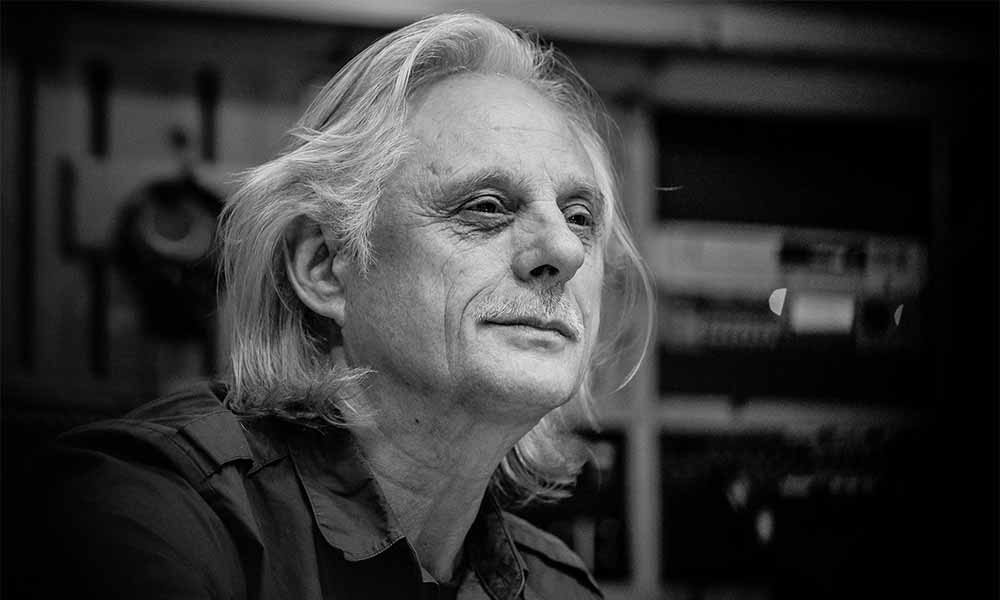
It wouldn’t be totally inaccurate to describe the German jazz label ECM as “the house that Keith Jarrett built.” After all, the American pianist’s 1975 album The Köln Concert has sold a staggering three and a half million copies and undoubtedly helped to establish – both financially and aesthetically – Manfred Eicher’s Munich-based imprint. More than that, Jarrett’s success transformed ECM into a major contender in the jazz world, and the best ECM albums reveal an astonishing commitment to quality control that has more than ensured its place in the jazz pantheon.
But while Jarrett, who first recorded for the company in late 1971 and, 48 years later, still records for it, had a big part to play in the label’s success, it was producer Manfred Eicher whose vision made ECM a reality. Launching the company in November 1969 (with American pianist Mal Waldron’s album Free At Last), he steadily built ECM into one of the most unique labels in jazz, with its own distinctive sound, style, and look.
Even today, ECM is still at the cutting edge of contemporary jazz, as our pick of the label’s 50 best albums prove. Think we’ve missed any? Let us know in the comments section below.
Listen to the best of ECM Records on Apple Music and Spotify.
50: Mal Waldron: Free At Last (1970)
On November 24, 1969, this well-regarded 44-year-old New York pianist/composer, who was then living in Europe, made history by leading ECM’s first-ever recording session. The resulting trio album, Free At Last, with its bold experimentation, encapsulated some of the musical virtues that later became synonymous with ECM’s unique philosophy.
Key track: “Balladina”
49: Julian Priester And Marine Intrusion: Polarization (1977)
An in-demand trombonist from Chicago, Priester has played with everyone from Dinah Washington to Sun Ra and Herbie Hancock, but only made a handful of solo albums. This was his second – and final – ECM album, recorded with a sextet in Germany. The music is by turns contemplative and energetic, but is sufficiently probing and cerebral to fit the archetypal ECM template.
Key track: “Wind Dolphin”
48: Lester Bowie: All The Magic! (1982)
Maryland horn-blower Lester Bowie (1941-1991) was often associated with groups during his career, including Art Ensemble Of Chicago and Lester Bowie’s Brass Fantasy. He did make a few solo albums along the way, and this one was his second for ECM. Not an archetypal ECM album, it draws on Dixieland, blues, and gospel flavors and is peppered with offbeat humor (one track, featuring trumpet and vocal effects, is called “Miles Davis Meets Donald Duck’).
Key track: “For Louie”
47: Jon Hassell: Power Spot (1986)
Hassell’s many credits (which include Talking Heads, Peter Gabriel, Tears For Fears, and Ry Cooder) read like a Who’s Who of rock, but his own albums have been more experimental. This beauty (the first of his two ECM albums) found the New York trumpeter being produced by Brian Eno and Daniel Lanois on a mesmerizing meld of horns, synth washes, tape loops, and tribal drums.
Key track: “The Elephant And The Orchid”
46: Egberto Gismonti: Dança Dos Escravos (1989)
This mesmerizing album, whose title translates as “Dance Of The Slaves,” finds the Brazilian fretboard virtuoso alternating between 14-, 12-, ten- and six-string guitars. The result is a rich musical tapestry on which plaintive melodies and pungent motifs meet rolling arpeggios and fleet-fingered fretboard work.
Key track: “Lundu”
45: Enrico Rava: The Pilgrim And The Stars (1975)
Combining melancholic atmospherics with a cinematic vibe, this early album from an Italian musician, who switched from trombone to trumpet after hearing Miles Davis, was seemingly tailor-made for ECM. Rava receives sterling support throughout from his sidemen, John Abercrombie, Palle Danielsson, and John Christensen, who themselves would go on to contribute to many recordings for Manfred Eicher’s label.
Key track: “Bella”
44: Trygve Seim: Different Rivers (2001)
A Norwegian musician who was purportedly inspired to pick up the saxophone after hearing Jan Garbarek, Seim made his debut as a leader with this album, consisting of ten cinematic pieces performed by a 13-member ensemble that included noted trumpeter Arve Henriksen. The music is beautifully-wrought, and the album’s most affecting songs are suffused with a brooding melancholy.
Key track: “Sorrows”
43: Art Lande: Rubisa Patrol (1976)
Led by US pianist Art Lande, the group that recorded Rubisa Patrol was a short-lived ensemble comprised of noted trumpeter Mark Isham, who went on to become a soundtrack composer, bassist Bill Douglass, and drummer Glenn Cronkhite. This album is an exciting post-bop confection that blends world music flavors with energetic uptempo pieces and reposeful ballads.
Key track: “Romany”
42: Bobo Stenson: Reflections (1996)
A veteran Swedish pianist, Stenson has played with many American musicians during their European travels, ranging from Sonny Rollins to Don Cherry. Arguably, though, the best recording of the eight he’s made for ECM is this one, recorded alongside fellow Scandinavians bassist Anders Jormin and drummer Jon Christenson. Reflections is more energetic than many ECM sessions, with Stenson’s crystalline piano sparkling throughout.
Key track: “The Enlightener”
41: Nils Petter Molvær: Khmer (1997)
One of the first ECM albums to combine jazz improv with electronica, sampled sounds, and dance-music beats, Khmer was the brainchild of Molvær, a Norwegian trumpeter/composer who had previously played in a band called Masqualero. The album proved profoundly influential and its repercussions can still be felt in Scandinavian jazz over 20 years later.
Key track: “Tløn”
40: Arve Henriksen: Cartography (2008)
A Norwegian trumpeter renowned for his breathy, flute-like tone, Henriksen’s forte is creating immersive soundscapes. His only album for ECM, Cartography is a blend of studio and live tracks that finds the trumpeter creating an otherworldly atmosphere where keening melodies are framed by waves of soft synthesizers and samples. Hauntingly beautiful.
Key track: “Sorrow And Its Opposite”
39: Art Ensemble Of Chicago: Nice Guys (1979)
Beginning in the late 60s, this Windy City collective (whose line-up included trumpeter Lester Bowie and reed man Roscoe Mitchell) were major exponents of avant-garde jazz before they arrived at ECM in 1978. Nice Guys was the quintet’s debut for the Munich-based label and melded bold experimental improv with textured percussive pieces and accessible Caribbean-tinged grooves.
Key track: “Dreaming Of The Master”
38: Ketil Bjørnstad: The Sea (1995)
Originally a classically-trained concert pianist, Bjørnstad (who’s a novelist and poet as well as composer) has been a major player in the rise of post-bop European jazz. The Sea is a haunting 12-part composition that features US cellist David Darling (one of Bjørnstad’s regular collaborators) as well as guitarist Terje Rypdal and drummer Jon Christensen, who together create musical alchemy.
Key track: “The Sea I”
37: Jan Garbarek: Rites (1998)
Prolific as both a leader and sideman for ECM (he made his first recording for the label in 1970), Garbarek’s saxophone sound, with its deeply spiritual quality and febrile edginess, is immediately recognizable. Rites is an adventurous double-album defined by panoramic sonic vistas and it finds the Norwegian reed man’s keening saxophone framed by dark, moody synths and mesmeric tribal drum beats.
Key track: “Where The Rivers Meet”
36: Tord Gustavsen Quartet: The Well (2010)
Defined by a mournful beauty, The Well is in many ways an archetypal ECM album of the second millennium. Gustavsen’s piano is often solemn and stately, while Tore Brunborg’s tenor saxophone possesses a breathy gravitas. The fact that eight of the 49-year-old Norwegian’s albums have been released by ECM (his last was in 2018) means that Gustavsen is considered a core contributor to the label.
Key track: “Circling”
35: John Abercrombie And Ralph Towner: Sargasso Sea (1976)
Sargasso Sea was the first – and best – of two collaborations between the American fretboard geniuses Abercrombie and Towner. Despite their contrasting styles and different approaches to their instruments, they interact beautifully on a series of eight duets which range from beatific vignettes (“Fable”) and pastel-hued mood pieces (“Romantic Descension”) to more overt displays of virtuosity (“Staircase”).
Key track: “Fable”
34: Eberhard Weber: The Colours Of Chloë (1974)
A bassist and composer from Stuttgart, Weber helped to give ECM its early sonic identity with outstanding albums like this one, which was an adventurous amalgam of jazz improv with through-composed passages of symphonic music. It consists of four richly-orchestrated tone poems, all of which illustrate Weber’s gift for composing evocative mood pieces that feel like the soundtrack to an imaginary movie.
Key track: “The Colours Of Chloë”
33: Meredith Monk: Dolmen Music (1980)
A composer, pianist, singer, filmmaker, and choreographer, the multi-talented Monk, who is still recording for ECM, has a long association with Manfred Eicher’s label that goes right back to 1980. Dolmen Music was her envelope-pushing debut for the German imprint and is an arresting showcase for Monk’s unorthodox and declamatory vocal style, which soars over minimal piano accompaniment.
Key track: “Gotham Lullaby”
32: John Surman: The Road To St Ives (1990)
A Devon-born reed master, Surman has over 20 ECM albums to his name, but this one, a kind of sonic travelogue, probably represents the pinnacle of his work for Manfred Eicher’s label. Each of the 12 songs are named after significant places in England’s West Country, and Surman plays all the instruments (saxophones, bass clarinet, synths, and percussion) to create a series of spellbinding mood pieces.
Key track: “Mevagissey”
31: Terje Rypdal: After The Rain (1976)
Between 1971 and 2013, Rypdal, a Norwegian guitarist whose first musical inspiration was The Shadows’ fretboard maestro, Hank Marvin, was one of ECM’s core artists. After The Rain is a stunning solo set on which Rypdal plays every instrument to create ten – mostly brooding – atmospheric soundscapes dominated by soaring guitar lines.
Key track: “Air”
30: Kenny Wheeler: Angel Song (1997)
An in-demand Canadian-born trumpeter who lived in the UK, Wheeler (1930-2014) made nine solo albums for ECM between 1975 and 2013. On the notably drumless Angel Song, Wheeler joined forces with saxophonist Lee Konitz, guitarist Bill Frisell and bassist Dave Holland to come up with nine elegant, low-key pieces that were in perfect sync with ECM’s chamber-jazz aesthetic.
Key track: “Nicolette”
29: Mike Nock: Ondas (1982)
This was the New Zealand-born pianist’s only album for ECM: a trio recording with bassist Eddie Gomez and drummer Jon Christensen assisting. Nock’s piano playing is luxuriously spacious yet eloquent, and his compositions are evocative in a vivid, pictorial way. An underappreciated gem in ECM’s catalogue, Ondas deserves a wider audience.
Key track: “Forgotten Love”
28: Arvo Pärt: Tabula Rasa (1984)
A formidable Estonian composer, Pärt joined ECM’s roster and launched the label’s New Series imprint, devoted to recordings of contemporary classical music. The centerpiece of this five-track album is the elegiac title music, which is a two-part concerto for two violins and chamber orchestra, written in a minimalist style. Also included is the haunting “Cantus In Memory Of Benjamin Britten.”
Key track: “Tabula Rasa 1: Ludus”
27: Paul Bley: Open, To Love (1973)
A renowned Canadian pianist/composer, Bley (1932-2016) was a proponent of bebop who recorded with Charlie Parker in the 50s before joining the vanguard of the avant-garde jazz movement. This solo piano album was his third outing for ECM, but its meditative, pointillistic style and ambient utilization of space helped to define the label’s sonic identity in its formative years.
Key track: “Ida Lupino”
26: Charlie Haden: The Ballad Of The Fallen (1983)
A double bassist who rose to fame with Ornette Coleman, Haden later led a remarkable ensemble called Liberation Music Orchestra. This was his second album with a new incarnation of the 12-piece outfit, which in 1983 included pianist Carla Bley (who scored the arrangements), trumpeter Don Cherry, saxophonist Dewey Redman, and drummer Paul Motian. There’s a decidedly Latin feel to the ten compositions, which are beautifully arranged and played.
Key track: “Els Segadors”
25: Jan Garbarek Group: It’s OK To Listen To The Gray Voice (1984)
Norwegian saxophonist Garbarek became a familiar name to jazz fans when he played in Keith Jarrett’s “European Quartet” in the 70s, but he quickly established himself as an important recording artist in his own right. Arguably the peak of his work is this absorbing set whose titles are based on poems by the Swedish bard Tomas Tranströmer. The music is episodic, veering from serene tableaus to angst-ridden ruminations.
Key track: “White Noise Of Forgetfulness”
24: Dave Liebman: Lookout Farm (1974)
This native New Yorker was still playing sax in Miles Davis’ group when he recorded Lookout Farm, the first of only two outings for ECM. The saxophonist, who also plays flute on the album, is joined by a band that includes guitarist John Abercrombie and keyboardist Richie Beirach.
Key track: “Pablo’s Story”
23: Marion Brown: Afternoon Of A Georgia Fawn (1971)
A noted avant-garde saxophonist who recorded for Impulse! and ESP-Disk,” Brown (1931-2010) recorded this one-off album for ECM in New York during August 1970. Featuring a stellar supporting cast (including Anthony Braxton, Chick Corea, Bennie Maupin, and Andrew Cyrille), the album is highly experimental and contains two long tracks dominated by insect-like percussive noises.
Key track: “Djinji’s Corner”
22: The Gary Burton Quartet With Eberhard Weber: Passengers (1977)
A key ECM recording artist in the 70s and early 80s, this Indiana-born vibraphonist had a young Pat Metheny in his ace group on Passengers, which also features two bassists: Steve Swallow on bass guitar, with Eberhard Weber on electric double bass, interweaving contrapuntal lines that bind the music together.
Key track: “Sea Journey”
21: Pat Metheny Group: Offramp (1982)
As well as enjoying a stellar solo career, Metheny has successfully led his own band as a separate entity since 1977. Offramp showcased the fretboard maven playing guitar synth for the first time and went on to top the Billboard jazz charts (it also won a Grammy for best fusion performance). The album’s keystone is the gently chugging anthem “Are You Going With Me?” which became the guitarist’s signature tune.
Key track: “Are You Going With Me?”
20: Jan Garbarek, Keith Jarrett, Palle Danielsson, Jon Christensen: Belonging (1974)
This gem, the first of five albums (two studio, three live) from Jarrett’s much-heralded “European Quartet,” stands out as one of ECM’s finest musical moments of the 70s. By turns febrile and sedate, its most compelling moment is the gospel-hued “Long As You Know You’re Living Yours,” which famously inspired rock band Steely Dan’s song “Gaucho.”
Key track: “Long As You Know You’re Living Yours”
19: Jack DeJohnette: Special Edition (1979)
Though noted as a drummer, DeJohnette also plays piano and melodica on this album, which features two avant-garde saxophonists (David Murray, who doubles on bass clarinet, and Arthur Blythe, then both rising stars of the post-bop scene) with bassist/cellist David Warren. The album includes two superb retoolings of Coltrane tunes (“Central Park West” and “India”), but it’s DeJohnette’s impassioned, high-voltage homage to free jazz magus Eric Dolphy (“One For Eric”) that impresses most.
Key track: “One For Eric”
18: Art Ensemble Of Chicago: The Third Decade (1985)
The legendary group’s swansong for ECM, The Third Decade, was more controlled and less frantic than some of their previous releases, but it was still flecked with their customary musical humor and penchant for unorthodox instruments such as bells, sirens, and bicycle horns. Highlights range from the loose-limbed groove “Funky AECO” and the Caribbean-infused bop of “Zero” to the mournful “Prayer For Jimbo Kwesi.”
Key track: “The Bell Piece”
17: Keith Jarrett: The Survivors’ Suite (1976)
A sprawling, slow-starting 49-minute extemporization divided across two sides of vinyl, The Survivors’ Suite showcased Jarrett’s “American Quartet” (Dewey Redman, Charlie Haden, Paul Motian), whose playing was edgier and more visceral than that of his European band. Jarrett plays saxophone, bass recorder, and percussion as well as piano, helping to weave disparate elements into a cohesive and at times utterly compelling musical narrative.
Key track: “Conclusion”
16: John Abercrombie: Timeless (1975)
A guitarist from New York, the late John Abercrombie enjoyed a long and fruitful association with ECM that spanned 42 years, from 1975-2017. His debut album for the label was Timeless, which teamed him up with ex-Mahavishnu Orchestra keyboardist Jan Hammer and former Miles Davis drummer Jack DeJohnette. The set blends blistering jazz-rock excursions (“Lungs,” “Red And Orange”) with more tranquil mood pieces (“Love Song”).
Key track: “Lungs”
15: Chick Corea: Return To Forever (1972)
Though billed as a solo Corea project, this album introduced the very first incarnation of the Connecticut keyboard maven’s famous Return To Forever band: a quintet comprised of Flora Purim (vocals), Joe Farrell (sax/flute), Stanley Clarke (bass) and drummer Airto Moreira. Though they would eventually morph into a veritable jazz-rock behemoth, here the band offer an organic and invigorating mode of Latin jazz.
Key track: “Return To Forever”
14: Anouar Brahem: Blue Maqams (2017)
A master of the oud (an Arabic multi-stringed lute-like instrument), Tunisia-born Brahem made his debut with ECM in 1991 and, to date, has recorded a dozen albums for the label. Blue Maqams finds Dave Holland, Django Bates, and Jack DeJohnette offering sympathetic accompaniment to Brahem’s elegant oud melodies in an exciting marriage of eastern and western music.
Key track: “Opening Day”
13: Ralph Towner: Solstice (1974)
Nobody can play 12-string acoustic guitar like Towner, who started off on trumpet and piano before adding the guitar to his musical armory. A founder member of the group Oregon, Towner enjoyed a long parallel career at ECM. This cache of lush soundscapes was his second solo outing for the label, recorded in the company of saxophonist Jan Garbarek, bassist Eberhard Weber, and drummer Jon Christensen.
Key track: “Oceanus”
12: Gateway: Gateway (1975)
A jazz supergroup comprising drummer Jack DeJohnette, bassist Dave Holland, and guitarist John Abercrombie, Gateway made four albums for ECM, though this one, their eponymous debut, is perhaps their finest. The rock-tinged “Back-Woods Song,” built on Holland’s infectious bass line, is the set’s standout cut, illustrating the trio’s super-intuitive level of musical interplay.
Key track: “Back-Woods Song”
11: Keith Jarrett, Jan Garbarek, Palle Danielsson, Jon Christensen: My Song (1978)
This, the second album by Jarrett’s so-called “European Quartet,” was famed for its delicate and sweetly lyrical title song. Other highlights include “Questar,” a fluid, warmly melodic piece in which Garbarek’s probing saxophone is juxtaposed with the pianist’s crystalline filigrees, while “The Journey Home” is a long, three-part suite peppered with bluesy inflections.
Key track: “My Song”
10: Vijay Iyer: Break Stuff (2015)
From Albany, New York, Vijay Iyer had recorded 17 albums before signing with ECM in 2013. Break Stuff, his third – and best – outing for the label finds the minimalist pianist playing in a symbiotic trio alongside bassist Stephan Crump and drummer Marcus Gilmore. Juxtaposing tunes by Thelonious Monk, John Coltrane, and Billy Strayhorn with strong self-penned material, Iyer proved he was an exciting and original contributor in the piano trio field. One of ECM’s best albums of the 2010s.
Key track: “Hood”
9: Leo Smith: Divine Love (1979)
Later known as Wadada Leo Smith, this Mississippi horn blower produced one of ECM’s greatest ever albums in the shape of Divine Love, an ethereal, three-track opus whose title track is a 21-minute tone poem in which trumpet, flutes, and assorted tuned percussion intermingle to create a tapestry of sound. Lester Bowie, Kenny Wheeler, and Charlie Haden provide stellar cameos.
Key track: “Divine Love”
8: Gary Burton And Chick Corea: Crystal Silence (1973)
One of the first classic albums in ECM’s catalogue, this spectacular summit between vibraphone maestro Burton and ex-Miles Davis pianist Corea helped to establish the urbane aesthetic that came to define Manfred Eicher’s fledgling label. Recorded in Oslo, the set’s nine tracks shimmer with a translucent beauty and capture the two protagonists interacting as if telepathically on a range of material.
Key track: “Crystal Silence”
7: Dave Holland Quartet: Conference Of The Birds (1972)
After rising to fame with Miles Davis’ late 60s band, Holland briefly co-led an avant-garde group called Circle, with Chick Corea, before making his debut as a leader with this album, in 1972. A fiercely progressive collection of original, open-ended avant-garde tunes, it features strong contributions from woodwind players Anthony Braxton and Sam Rivers together with drummer Barry Altschul.
Key track: “Four Winds”
6: Charles Lloyd: The Water Is Wide (2000)
From 1989 to 2013, this revered Memphis saxophonist/flutist released 16 albums for ECM during a prolific purple patch. The Water Is Wide, a mixture of fine originals and tastefully-executed standards, finds Lloyd fronting a simpatico quintet that includes pianist Brad Mehldau and guitarist John Abercrombie. Exquisite.
Key track: “The Monk And The Mermaid”
5: Steve Reich: Music For 18 Musicians (1978)
Perhaps the peak of American pianist/composer Steve Reich’s minimalist aesthetic, the 57-minute-long Music For 18 Musicians received its world premiere at New York’s Town Hall in 1976 and then received an album release via ECM two years later. There’s a mathematical precision to the piece, and yet, through repetition, its rivulets of rhythm and percussion live and breathe like an organic entity. A hugely influential album, Music For 18 Musicians was beloved by David Bowie, who described it as “Balinese gamelan music cross-dressing as minimalism.”
Key track: “Pulse: Sections I-IV”
4: Pat Metheny: Bright Size Life (1976)
Now a much-decorated veteran with a staggering 20 Grammy Awards to his name, Missouri fretboard maestro Metheny was just 21 when he recorded this, his debut album for ECM. A trio date featuring future Weather Report member Jaco Pastorius on fretless bass, and drummer Bob Moses, Bright Size Life clearly demonstrated that Metheny had already patented his own distinctive sound, concept, and style. A vivid portrait of a guitar genius as a young man.
Key track: “Bright Size Life”
3: Bennie Maupin: The Jewel In The Lotus (1974)
A Detroit-born multi-reed man and flutist, Maupin’s career gained traction following his appearance on Miles Davis’ Bitches Brew and his membership in Herbie Hancock’s Mwandishi band during the early 70s. Hancock appears as part of a sextet on this, Maupin’s only ECM album, recorded in New York with Manfred Eicher at the helm. The music is deeply meditative and abstract (often to the point of being eerie and otherworldly), but never less than fascinating.
Key track: “The Jewel In The Lotus”
2: Jan Garbarek-Bobo Stenson Quartet: “Witchi-Tai-To” (1974)
An early ECM classic from saxophonist Garbarek’s astounding collaboration with Swedish pianist Stenson. By then, the 26-year-old Norwegian had already established himself as one of Europe’s leading reed players via two previous albums for Manfred Eicher’s label. This one, though, with its glistening improv and symbiotic ensemble work, put Garbarek into another league altogether.
Key track: “Kukka”
1: Keith Jarrett: The Köln Concert (1975)
Topping our rundown of the 50 best ECM albums is the label’s most successful ever release. When almost everyone else in jazz during the 70s was turning to electric fusion, Jarrett steadfastly remained an acoustic player. Despite suffering from crippling back pain, sleep deprivation, and being forced to perform on a battered piano whose sound was less than perfect, Jarrett conjured up an improvised solo recital that was transcendent in its beauty. The Köln Concert remains the best-selling solo piano album of all time and the brightest, most valuable jewel in ECM’s crown.
Key track: “Part 1”
Looking for more? Discover the story behind ECM’s unique sound and style.

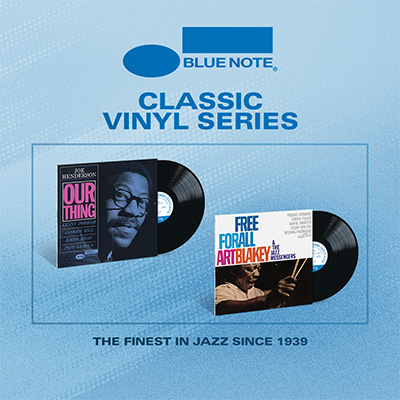







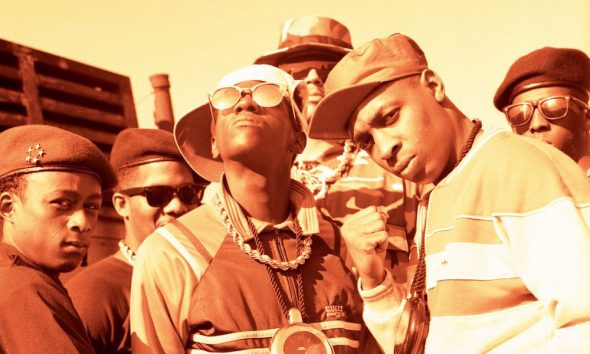
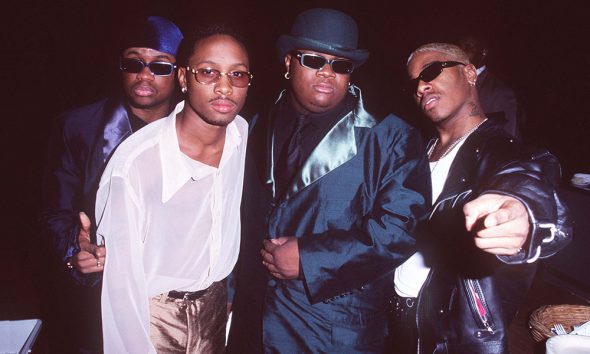
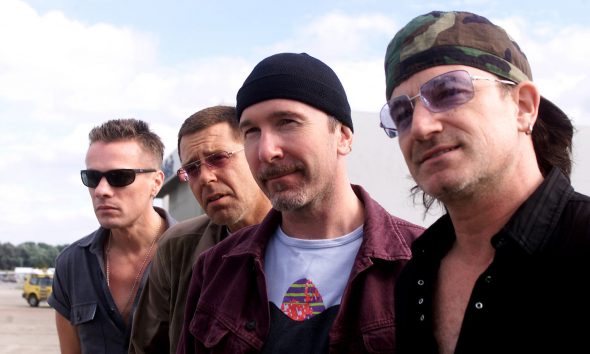
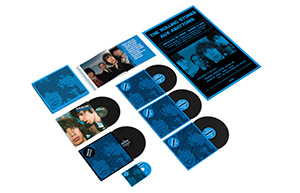
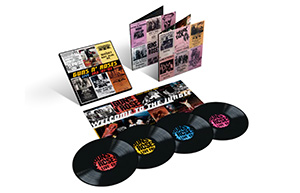
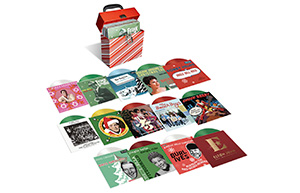
Claude Soiron
November 13, 2019 at 4:56 pm
I regret the absence of Facing You of Keith Jarrett
Lelio Simi
November 13, 2019 at 9:42 pm
Not even a mention for Jarrett/Peacock/De Johnette Trio Standard…
Paul Galbraith
November 14, 2019 at 2:42 pm
Thanks for the list. I have enjoyed many of these and will explore the others.
Here are some other ECM recordings I have particularly enjoyed:
Dino Saluzzi, Palle Mikkelborg, Charlie Haden: Once Upon A Time – Far Away In The South
Egberto Gismonti: Sol Do Meio Dia
Egberto Gismonti: Solo
Charlie Haden, Jan Garbarek, Egberto Gismonti: Magico
Charlie Haden, Jan Garbarek, Egberto Gismonti: Folk Songs
Pat Metheny & Lyle Mays: As Falls Wichita, So Falls Wichita Falls
Pat Metheny Group: Travels
Keith Jarrett / Gary Peacock / Jack DeJohnette: Standards, Vol. 1 (or any other by this trio)
Shankar: Song for Everyone
Shankar: Vision
Lester Bowie’s Brass Fantasy: I Only Have Eyes for You
JOAO BATISTA DIAS DA CRUZ
March 20, 2021 at 3:50 am
Yes, I agree
The list might go to other 50
Manuel Gonzalez
November 14, 2019 at 8:59 pm
Bill Connor’s “Of mist and melting” masterpiece of an album.
Larry Bush
February 14, 2020 at 4:16 am
No Pat Metheny Group’s “White Album?” You can’t do an ECM top 50 list without that!
FRANK
January 20, 2021 at 4:39 pm
Unfortunate, that so many of these are no longer available! Why?
Rob Ranches
March 16, 2021 at 5:26 pm
I miss Codona in the list, all 3 of them.
Richard Vanelli
March 17, 2021 at 6:30 pm
Why’d ya call Bennie Maupin Bernie? That wasn’t very nice.
Todd Burns
April 9, 2021 at 8:24 pm
Thanks for catching that, Richard! We’ve updated it now.
Martin
March 17, 2021 at 7:30 pm
Tord Gustavsen – Changing places
Collin Vallon – Rruga / Le vent / Danse
Stefano Bollani – Stone in the water
Marcin Wasilevski /SAC – Trio
Aaron Parks – Arborescence
Craig Taborn – Avenging Angel
Richard Beirach – Hubris
John Surman – Coruscating
Anouar Brahem – Le pas du chat noir
Tomasz Stanko – Soul of things
Liam Coleman
March 18, 2021 at 3:01 pm
Kenny Wheeler’s Deer Wan comes to mind.
Glen Robinson
March 18, 2021 at 3:19 pm
I agree with everything on the list, but I would include albums that influenced me and which I continue to love.
Circle Paris Concert (1971) and Chick Corea’s Piano Improvisations Vol. 1 (1971). Anouar Brahim’s The Astounding Eyes of Rita (2009). Wolfert Brederode’s Post Scriptum (2011). Nik Bartsch’s Ronin Modul 42 from Holon (2008). And Annette Peacock’s An Acrobat’s Heart (2000). One of my favourites ever is Gary Burton’s Dreams So Real (1976) featuring the music of Carla Bley, with a very young Pat Metheny playing gorgeous guitar on the title track. My first ECM purchase was Chick Corea’s first solo record, which to me, in its’ Oslo recording is akin to the northern sound of Glenn Gould’s solo recordings. Beautiful!
Fabrizio Sebastiani
March 18, 2021 at 3:36 pm
My top ECM albums certainly include, aside many mentioned in this list,
* Charlie Haden, Jan Garbarek, Egberto Gismonti: “Magico”
* Egberto Gismonti: “Sol Do Meio Dia“
* Egberto Gismonti: “Solo“
* Jan Garbarek / Miroslav Vitous / Peter Erskine: “Star”
* Jan Garbarek: “I took up the runes”
* Jan Garbarek: “Legend of the Seven Dreams”
* Keith Jarrett / Gary Peacock / Jack DeJohnette: “Standards, Vol. 1”
* Keith Jarrett European Quartet: “Personal mountains”
* Kenny Wheeler: “Deer Wan”
* Pat Metheny and Lyle Mays: “As Falls Wichita, so Falls Wichita Falls”
* Ralph Towner / Gary Burton: “Matchbook”
* Tord Gustavsen: “Changing places”
I very much agree on putting “Witchi-Tai-To” so high in the list; to me, it’s as much a masterpiece as “Kind of blue”. In general, I find that this list is really well-crafted, most of the almums listed int hese top 50 are truly great and among the EVCM best.
Henk Jansen
March 18, 2021 at 3:42 pm
David Darling’s Cycles is as well a masterpiece. Making Music with Hariprasad Chaurasia, Jan Garbarek, Zakir Hussain and John Mc Laughlin. Remembering Tomorrow form Steve Kuhn’s trio. The Magical Forest by Sinikka Langeland and group. And Arvo Part’s Wohlfartslied. There is too much to choose!
David Collins
March 18, 2021 at 4:19 pm
Charles Lloyd: Fish Out of Water
Charles Lloyd: Notes from Big Sur
Keith Jarrett:The Melody at Night, With You
Anouar Brahem: Le pas du chat noir
Arvo Pärt: Alina
Michael DuFermont
May 13, 2021 at 2:53 pm
Gary Burton…The New Quartet.
In general, I am just amazed at how Manfred Eicher got such an amazing sound of a mixing board (and I also think his microphone placement was groundbreaking).
James Geiger
September 18, 2021 at 7:23 pm
WOW fell asleep on too many of these – I cannot believe nothing by Gary Peacock trio such as NOW THIS or TANGENT……
Dan
October 6, 2021 at 8:52 am
Listen to the album Pendulum /Eberhard Weber. Bass solo. Amazing!
Dan
October 6, 2021 at 8:57 am
good point
Chico
March 17, 2022 at 1:35 am
Thanks for this great selection. I put all 50 albums on Spotify playlist>>>
https://open.spotify.com/playlist/6pwDi3WBl3Qz9gFVeqTwFb
Stephen
September 15, 2022 at 12:00 am
Too many fretboards, not enough guitars.